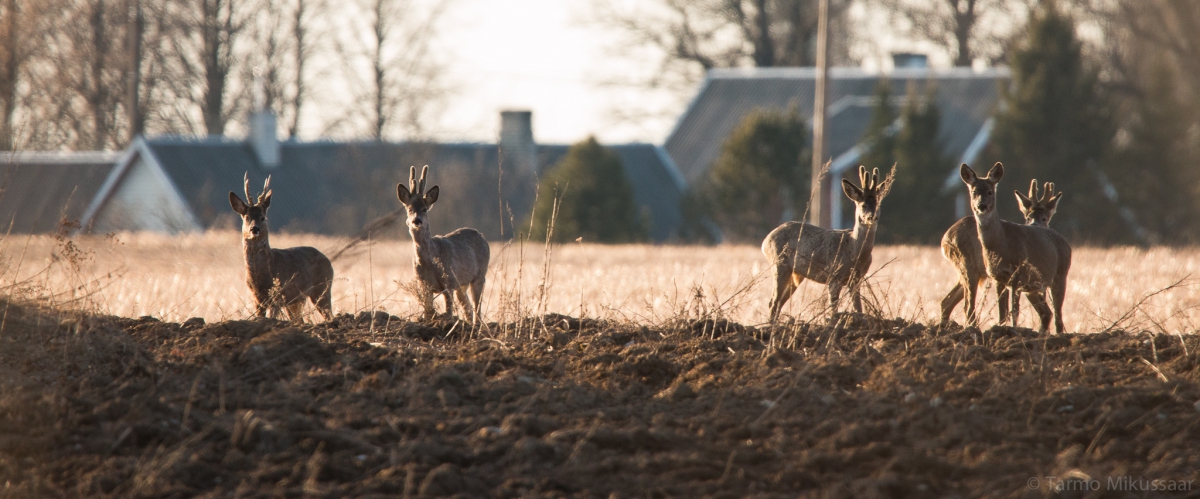 Roe bucks and one doe in mid-April 2017.The antlers of one buck is already bare. The furs are still winter-coloured and fit very well into the bare spring landscape.
Roe bucks and one doe in mid-April 2017.The antlers of one buck is already bare. The furs are still winter-coloured and fit very well into the bare spring landscape.The winter which fortunately was easy to bear for the roe deer has ended and the animals are in good condition. Springtime activities begin. The bucks need to put their recently ready antlers into working order and all roe deer regardless of sex must change the winter outfit to a summertime one.
The cleaning of the antlers takes only an hour or two according to literature and then they are ready. Some bucks have their antlers cleaned as of today, many have them still furry. Of those too the great majority should have finally finished head garnishes by mid-May. Immediately after being freed from the surrounding velvet skin the antlers are pale and ooze blood. They get the darker colour later when they have already been used for their purpose: to mark the territory by rubbing against shrubs and trees. When the deer thrash trees and shrubs with the antlers and scratch the ground with the cloves a secretion is left that serves as a scent sign on the tree trunks and ground from glands on the forehead and between the cloves. The boars that are tolerant of their cospecifics in winter become ready to fight and no longer tolerate others of the same kind on their territory.
The moulting is a rather long process which begins in April for the younger, for the older in April, and lasts until early or mid-June. To start with the head, neck and legs turn reddish. Generally the process is governed by the length of light in the day but to some extent the start and course of the moulting is influenced by the weather too. In case of a cold winter and spring the process may start later and last longer.
Since for the young the moulting begins earlier, but for the older roe deer the cleaning of the antlers, a buck with clean/finished antlers but still with winter fur is generally middle-aged or older, a buck with hairy antlers and in summer coat however a young one. For a diseased animal both the development of antlers and the moulting process are delayed.
Tiit Randveer


